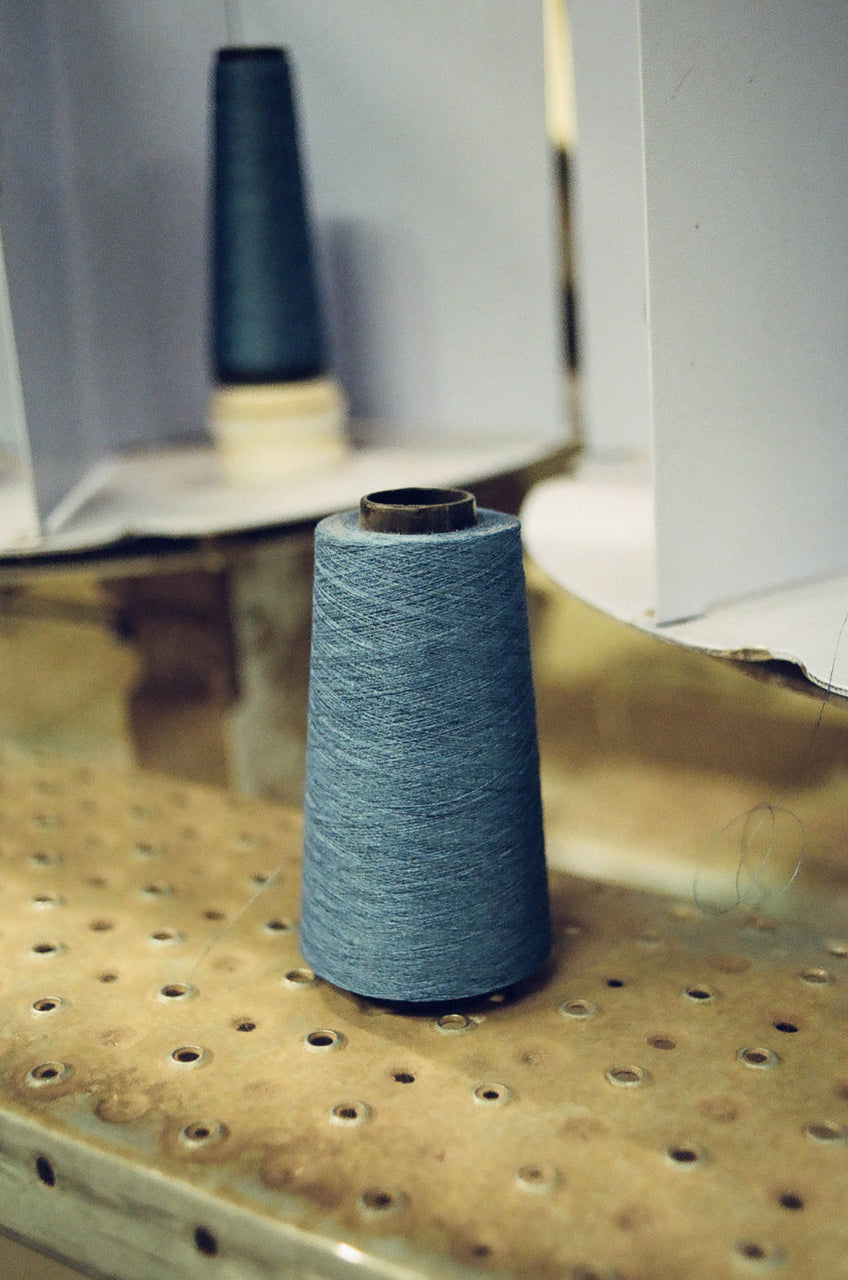For many of us, linen fabric exudes something natural and more artisan than most other fabrics, but how come? To start at a superficial level, the answer is indeed likely to be found in its surface and appearance. This tactile, imperfect, seemingly coarse woven material often used in its raw version, the sandy colour of flax, gives off an impression that it hasn’t been heavily processed and that it is somehow close to nature. To substantiate this notion, we talked to someone who is working with linen every day and happily so, the Co-CEO of the Belgian linen manufacturer, Libeco, Bart Vandamme. At Bautier, we share the interest and enthusiasm for linen which is also why Libeco has been a cherished partner for several years. Bart Vandamme here offers us more insight into why linen not only seems natural but really is a ‘champion of sustainability’.


Could you first explain a bit about yourself, how did you land in the role of Co-CEO at Libeco and how long have you been working with linen?
I’ve always been working in textiles. I started my career almost thirty years ago in a company called Bekaert Textiles which at the time was one of the biggest mattress ticking weavers in the world. In 2010, I landed at Libeco as a sales and marketing director, and the magical world of flax started to reveal its mysteries of linen to me. In 2017, the owner of the company, Raymond Libeert, decided to step aside as CEO of the company, and I became one of the two co-CEO’s of Libeco. It’s not a very common type of leadership and it’s challenging at times, but if it works, it’s greatly enriching - and that is the case at Libeco.
Where lies your personal passion for linen?
If you like beauty and simplicity, working with linen is the highest good. Linen has a lustre and a rich colour absorption that no other natural fibre has. The light hits linen in such a way that it gains depth and beauty, and the colours take on a beautiful sheen. Besides the vibrancy and the richness of its colour, linen has also a perfect drape and a nice texture.




Could you elaborate on the sustainable assets of linen, in comparison to other fabrics, what makes this one so advantageous from an environmental perspective?
Linen is a natural material woven from the fibres of the flax plant. Flax belongs to the family of bast fibres and is highly sustainable from an environmental perspective. Flax uses significantly fewer resources, including less water, energy, fertilisers and pesticides than cotton and polyester, the two dominant textile fibres. Flax is also a gentle crop in terms of its use of land and its impact on the soil. Every part of the flax plant is used from the root to the seed, there is no waste at all. And finally flax plants absorb carbon at a high rate. In short, linen and flax are the champions of sustainability.
The fact that Libeco is a family business, I guess you've been able to continue the know-how and the 'secrets' of your craftsmanship which has been growing and developing for so many years now. How are you blending more than 160 years of know-how with modern technology?
The know-how and the craftsmanship are passed down from generation to generation, creating more than 160 years of expertise. All processes in production are artisanal processes that have been perfected through the years in combination with industrial progress. Libeco has always invested in state-of-the-art machinery and is well-known for its high quality standard. Belgian linen’s heritage and history are unrivalled worldwide.


With such a long history of linen, where are we now in terms of interest in the material, have you experienced an increased interest, further appreciation of the craft in Europe and the fact that it's a local product?
As sustainability has become a much more crucial topic during the last decade, we’ve seen an increased interest in natural fibres and especially in linen. And there has also been a growing interest in local production. A movement that will gain even more importance due to the current pandemic. ‘Produce local and shop local to reduce your ecological footprint’ sounds like music in most people’s ears. Our raw material is grown in a belt of land stretching from northern France to the Netherlands, and all fabrics are woven in our CO2-neutral plant, located in Meulebeke, Belgium.

What is your vision for linen in the future? Could this material be exploited in new ways?
Flax is the fibre of the future and linen will undoubtedly gain popularity in the coming years. New technologies in finishing will add more characteristics to the linen fabrics such as stain resistance and easy cleaning, to marry function and beauty.
-
Photography: Eefje De Coninck & Senne Van der Ven